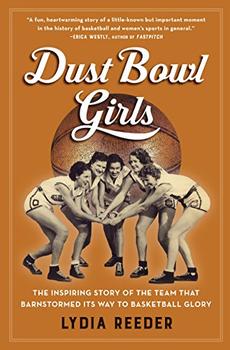Summary | Excerpt | Reviews | Beyond the book | Read-Alikes | Genres & Themes | Author Bio

The Untold Story of Maui's Sugar Ditch Kids and Their Quest for Olympic Glory
by Julie CheckowayThe inspirational, untold story of impoverished children who transformed themselves into world-class swimmers.
In 1937, a schoolteacher on the island of Maui challenged a group of poverty-stricken sugar plantation kids to swim upstream against the current of their circumstance. The goal? To become Olympians.
They faced seemingly insurmountable obstacles. The children were Japanese-American, were malnourished and barefoot and had no pool; they trained in the filthy irrigation ditches that snaked down from the mountains into the sugarcane fields. Their future was in those same fields, working alongside their parents in virtual slavery, known not by their names but by numbered tags that hung around their necks. Their teacher, Soichi Sakamoto, was an ordinary man whose swimming ability didn't extend much beyond treading water.
In spite of everything, including the virulent anti-Japanese sentiment of the late 1930s, in their first year the children outraced Olympic athletes twice their size; in their second year, they were national and international champs, shattering American and world records and making headlines from L.A. to Nazi Germany. In their third year, they'd be declared the greatest swimmers in the world, but they'd also face their greatest obstacle: the dawning of a world war and the cancellation of the Games. Still, on the battlefield, they'd become the 20th century's most celebrated heroes, and in 1948, they'd have one last chance for Olympic glory.
They were the Three-Year Swim Club. This is their story.
Sakamoto's decision to teach underprivileged children to swim and to challenge them to dream, changed hundreds of lives for the better. I was deeply moved by the fact that so many benefitted from his firm but compassionate attention and coaching. The final scene, focused on student Keo Nakama thirteen years later is inspiring. As he struggles to be the first person to swim the twenty-seven mile Kaiwi channel between the islands of Molokai and Maui, Nakama draws on the lessons learned from Sakamoto, proving that a good coach's influence lasts and lingers...continued
Full Review
 (921 words)
(921 words)
(Reviewed by Sarah Tomp).
The members of the Three-Year Swim Club began their careers in rough and dangerous irrigation ditches. However, even after they moved their practices to a more traditional swimming pool, they had to compete in other challenging venues.
Some were simply an unconventional size — sometimes creating an advantage, other times hindering performance times. The overheated pool in Stockton, California was only twenty yards long which allowed for faster event times, due to more push-offs the walls. In contrast, the Detroit Athletic Boat Club Pool at fifty-five yards long by forty feet wide had such narrow lanes that "backwash from adjacent lanes would hit the swimmers and cause drag," leading to slower times than usual.
Other pools were...

If you liked The Three-Year Swim Club, try these:

The Not-Quite States of America
by Doug Mack
Published 2018
An eye-opening journey to the most overlooked parts of America.

by Lydia Reeder
Published 2017
The Boys in the Boat meets A League of Their Own in this true story of a Depression-era championship women's team.
The only real blind person at Christmas-time is he who has not Christmas in his heart.
Click Here to find out who said this, as well as discovering other famous literary quotes!